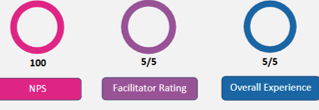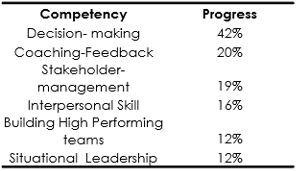Optimizing Employee Onboarding: 30-60-90 Day Plan

The 30-60-90 day onboarding plan is a three-phase approach to help new or newly promoted employees find their bearings in their new role. A well crafted 30-60-90 day onboarding plan fosters a seamless transition and sets the stage for long-term success. In this blog, Vivek Yatnalkar, our Head of Curriculum at Meeraq decodes the 30-60-90 day onboarding plan and provides insight into what each phase is all about and how to make sure that the onboarding plan sets the employee on a success pathway.
The 30-60-90 Day Onboarding Plan – What it’s all about
Phase 1: Establishing Satisfaction (Make them Happy): First 30 Days
During the initial 30 days, it is crucial to focus on making the new employee or promotee feel satisfied and comfortable with their decision to join the organization. The company or department should do everything necessary to ensure that the individual feels they have made the right choice. This includes providing a positive onboarding experience, introducing them to the company culture, and addressing any concerns or questions they may have. Building a strong foundation of trust and satisfaction sets the foundation for their journey.
Here’s an analogy to illustrate the importance of making the new employee feel welcome, is to think of it as similar to inviting a guest to your home. The company should make necessary arrangements like informing security and reception, providing a place to sit, preparing a welcome kit (possibly including an ID card), and offering lunch.
The subsequent steps include the new employee meeting their immediate manager, being introduced to the team, and receiving employee cards and completing HR formalities like signing forms and taking ID photos.
It is important to implement a structured induction program that spans two to seven days, depending on the company’s size. This program could involve providing a laptop, network ID, and access to training videos, as well as regular check-ins to ensure the employee’s comfort and progress.
If the team is large enough, the new employee can be introduced to key people and exposed to the organization’s structure, history, and facilities. This can include walking them around the company premises, showcasing machinery and technologies, and facilitating interactions with senior leaders.
This welcoming process should not be limited to the first day but should be a part of the company’s cultural DNA.
Phase 2: Facilitating Learning (Teach them): 30 to 60 Days
In the second phase, the focus shifts to teaching the individual about their job role, expectations, tools, techniques, systems, procedures, and any other relevant aspects of their position. This phase is a learning phase where the employee needs to gain confidence in their ability to perform their tasks effectively. The organization should provide the necessary training, resources, and support to ensure the employee feels equipped to handle their responsibilities. It is also important to align their career goals with the work they are doing, as a mismatch can lead to dissatisfaction.
It is essential to create an environment where individuals not only enjoy their work but also experience a sense of belonging and growth.
Confirming the Right Decision
At the initial stage of an employee’s journey, we want them to develop a positive perception of the organization. This feeling of having made the right decision should be nurtured throughout their tenure, whether it’s three, five, ten, or even twenty years. To achieve this, the organization must take deliberate steps to ensure employees continually experience that sense of fulfillment.
Setting Expectations
Once an employee joins our team, it’s crucial to clarify their role, responsibilities, and objectives. A conversation between the employee and their line manager is essential to establish clear expectations. This includes reviewing the job description and discussing key result areas (KRAs) and objectives. For those following the Objective Key Results (OKR) framework, it is necessary to delve into the specific goals, outcomes, and performance measurement methods. Additionally, if there are any incentives or rewards tied to achieving certain targets, it is important to communicate this information to the employee.
Supporting the Learning Journey
To support the employee in their learning and growth, it is vital to provide the necessary tools, techniques, and systems. Depending on the nature of our organization, these resources can range from coding practices and version control systems for an IT company to operational procedures and meeting protocols for a manufacturing company.
Phase 3: Cultivating Productivity (60 to 90 Days)
The third and final phase is about enabling the individual to become productive in their role. This is where the manager plays a critical role by applying the situational leadership model. The employee may encounter challenges, make mistakes, or face new obstacles while performing their duties. The manager should provide feedback, appreciate their achievements, and offer course corrections when necessary. The goal is to help the employee navigate through the initial hurdles and become proficient in their role.
Managers should act as coaches and mentors to their employees. They can regularly communicate with employees to ensure their productivity remains high. They could provide opportunities for growth and development and understand the employee’s career aspirations and work with HR to fulfill them. Line managers have ownership over talent engagement and development, while HR serves as a facilitative department.
Let us now highlight some essential practices for managers throughout an employee’s journey.
Essential practices throughout an employee’s journey:
- Clear Expectations: From the beginning, managers should effectively communicate goals and expectations to employees, ensuring alignment and clarity.
- Recognition and Variety: Managers should appreciate and acknowledge employees’ efforts and accomplishments to keep them motivated. Introducing variety into their work can help prevent monotony and promote creativity.
- Coaching and Mentoring: Managers should adopt a coaching and mentoring approach, providing guidance and support to employees. Regular communication helps maintain high levels of productivity and fosters growth opportunities.
- Career Development: Understanding employees’ career aspirations and collaborating with HR, managers can offer opportunities for skill development and advancement, empowering individuals to achieve their professional goals.
- Manager Ownership and HR Support: While line managers take ownership of talent engagement and development, HR serves as a facilitating department, providing functional training and support for skill improvement.
By implementing these practices, we create an optimal employee journey, where individuals feel valued, motivated, and empowered from the moment they join the organization.












